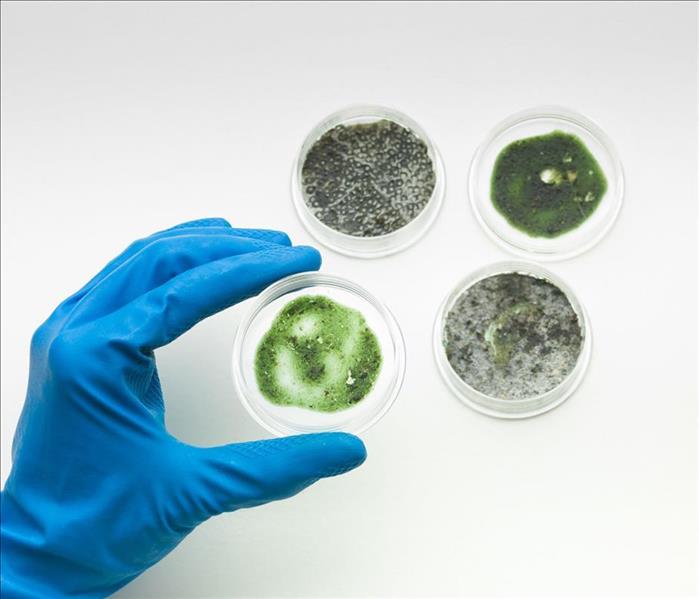The Different Types of Mold and Their Health Effects
8/9/2023 (Permalink)
Key Takeaways:
- Mold is a common problem that can have serious health effects.
- Different types of mold have different health impacts.
- Preventative measures can be taken to avoid mold growth.
- Professional mold remediation can effectively remove mold from your home.
Mold is a common problem that many homeowners face. It is not just unsightly, but can also be hazardous to our health. Knowing how to identify and prevent different types of mold can help protect our homes and loved ones from its harmful effects.
Understanding Mold
Mold is a type of fungus that thrives in warm, humid environments. It grows on organic matter, such as wood, paper, and fabric, and can cause a range of health issues. Mold reproduces by releasing spores into the air, which can be inhaled, ingested or come into contact with the skin. These spores can trigger allergic reactions, respiratory problems, and other health issues.
What Are the Common Types of Mold?
There are several types of mold, each with its own unique characteristics and health effects.
Cladosporium
Cladosporium is a common type of mold found both indoors and outdoors. It is often found in areas with high moisture, such as bathrooms and basements. Exposure to Cladosporium can cause allergic reactions, asthma attacks, and other respiratory problems.
Aspergillus
Aspergillus is a type of mold that can grow on walls, floors, and other surfaces. It is commonly found in homes with water damage, and can cause respiratory problems, allergic reactions, and even infections.
Stachybotrys
Stachybotrys, also known as black mold, is a type of mold that is commonly found in homes with water damage. It is known for its dark green or black color and slimy texture. Exposure to Stachybotrys can cause serious health problems, including respiratory problems, allergic reactions, and even neurological issues.
Penicillium
Penicillium is a type of mold that can grow on food, wallpaper, and other surfaces. While it is not as harmful as other types of mold, it can still cause allergic reactions, respiratory problems, and other health issues.
Preventing Mold
Preventing mold growth is essential for maintaining a healthy home environment. Here are some tips to prevent mold from growing in your home:
- Keep your home dry: Address any leaks or moisture problems immediately, and make sure that your home is properly ventilated.
- Clean regularly: Regularly cleaning your home can help prevent mold growth by removing any potential food sources for mold, such as dust and dirt.
- Control humidity levels: Keep your home’s humidity levels below 60 percent to prevent mold growth.
- Address water damage: If your home has experienced water damage, it’s important to address it as soon as possible to prevent mold growth.
Mold Remediation
If you suspect that you have mold in your home, it’s important to take action immediately. Mold can spread quickly and cause serious health issues if left untreated. SERVPRO of South and Northwest Grand Rapids can help identify and remove mold from your home safely and effectively.
Final Thoughts
Understanding the different types of mold and their health effects is essential for protecting your home and family. By following these preventative measures and taking action if you suspect mold growth in your home, you can keep your home healthy and safe.

 24/7 Emergency Service
24/7 Emergency Service
